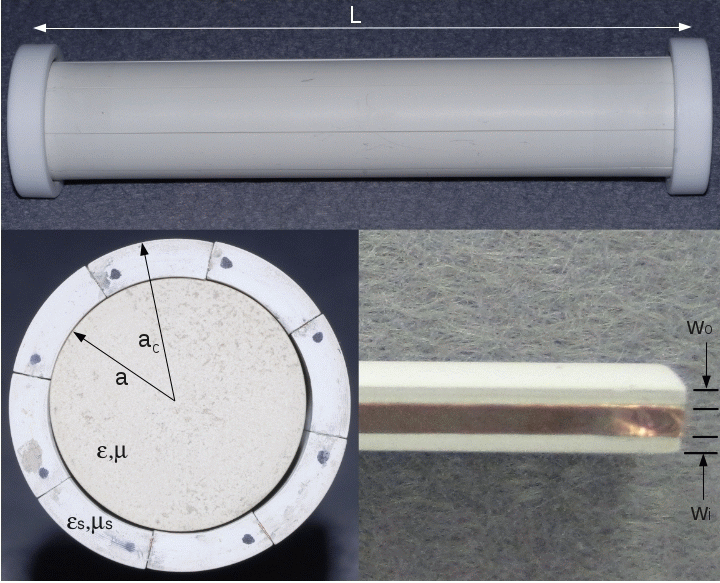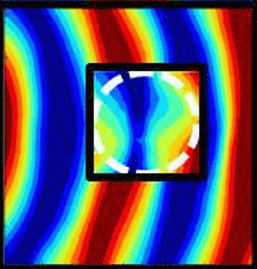Scientists create first free-standing 3D cloak
January 31, 2012

A cylindrical tube was cloaked with a shell of plasmonic metamaterial to make it appear invisible (credit: Andrea Alu/University of Texas at Austin)
Researchers led by the University of Texas at Austin have cloaked a three-dimensional object standing in free space, bringing the invisibility cloak one step closer to reality.
The researchers used “plasmonic metamaterials” to hide an 18-centimeter cylindrical tube from microwaves.
When light strikes an ordinary object, it rebounds off its surface towards another direction, just like throwing a tennis ball against a wall. The reason we see objects is because light rays bounce off materials towards our eyes and our eyes are able to process the information.
Plasmonic metamaterials have the opposite scattering effect. “When the scattered fields from the cloak and the object interfere, they cancel each other out and the overall effect is transparency and invisibility at all angles of observation.
“One of the advantages of the plasmonic cloaking technique is its robustness and moderately broad bandwidth of operation, superior to conventional cloaks based on transformation metamaterials. This made our experiment more robust to possible imperfections, which is particularly important when cloaking a 3D object in free-space,” said study co-author Professor Andrea Alu.

Near-field mapping of the electric field distribution (snapshot in time) around and on top of the object under test (credit: Andrea Alu/University of Texas at Austin)
In this instance, the cylindrical tube was cloaked with a shell of plasmonic metamaterial to make it appear invisible. The cloak worked best at a frequency of 3.1 gigahertz with a moderately broad bandwidth.
“In principle, this technique could be used to cloak light; in fact, some plasmonic materials are naturally available at optical frequencies,” said Alu. “However, the size of the objects that can be efficiently cloaked with this method scales with the wavelength of operation, so when applied to optical frequencies we may be able to efficiently stop the scattering of micrometer-sized objects.
“Still, cloaking small objects may be exciting for a variety of applications. For instance, we are currently investigating the application of these concepts to cloak a microscope tip at optical frequencies. This may greatly benefit biomedical and optical near-field measurements,” continued Professor Alu.
Ref.: D Rainwater, et al., Experimental verification of three-dimensional plasmonic cloaking in free-space, New Journal of Physics, 2012; 14 (1): 013054 [DOI: 10.1088/1367-2630/14/1/013054]